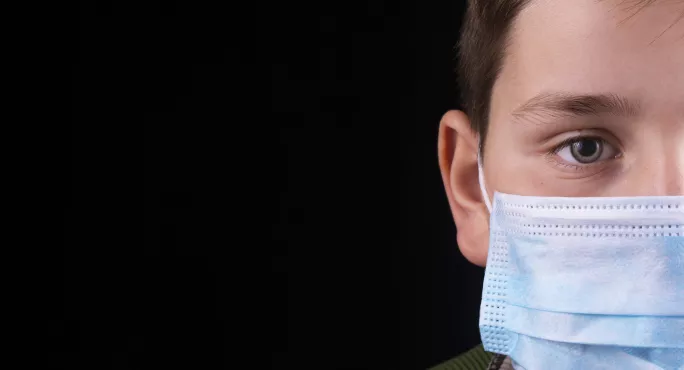‘In Year 8, only one student was wearing a mask’

Imagine if, at the entrance to Tesco, there was a sign that read, “We strongly advise you to wear masks.” Or if the announcement on the train admitted, “We know some of you feel anxiety about wearing masks, but please give it serious consideration.”
Would anybody wear them? It’s doubtful. But these are the messages the government is sending to students in schools.
With the troubling news that teachers are being “threatened” by parents over the use of masks in classrooms, it’s clear that the government, in trying to get the population behind the reopening of schools, has sat very uncomfortably on the fence.
Headteachers are now getting a taste of what it’s like to be those classroom practitioners who’ve for a long time felt unsupported by a school’s behaviour policy. They’re knocking on the government’s door for back-up, simply to be told: “Just tell them to behave. That’ll do it.”
Schools reopening: The problem of only ‘recommending’ face masks
Just as the cheerful images doing the rounds in the media of well-ventilated and socially distanced classrooms bear little resemblance to the huddled, shoulder-jostling reality of school corridors and cramped classrooms, a “recommendation” is hardly the same as legislation.
The reason I feel comparatively safe in the supermarket or on the train is because it’s mandatory to wear a mask. Making it a choice is like telling a student that their homework is optional - and we all know how few would complete it if they were told that.
Children require clear boundaries and guidance - something educators have known since time immemorial. And, anyway, hasn’t wearing a mask in public spaces been the guidance all along, assuming the necessary social distancing can’t be maintained?
Medical masks are compulsory for students in Germany, but school is not. In France, robust category one, or surgical-quality masks, are demanded in schools, with no exemptions. It’s not just secondary children who have to follow these mask-wearing rules, either. All children of 6 or older must wear them during school hours, and the same is the case in Spain and Italy.
People might well disagree with these rules, but they are at least clear, unlike our own patchwork of regulations, which change according to the weather.
Different Covid policies
I teach in two schools. One of these is much stricter on mask use than the other, with the vast majority of children following the leadership’s advice to wear them. They don’t all like it.
I overheard one student earlier today telling a friend that he waits until the teacher tells him to pull his mask up over his face. (He’s also loudly anti-vax, and believes Covid-19 was designed to distract us from Brexit - truly, we owe it to the students to drown out their parents’ voices sometimes.) But even he, eventually, complies - because it’s school policy.
In the second school, they very much stick to the “if they want to” strategy. Period five, Year 8, one student was wearing a mask. One.
The good news, from what I’ve seen so far, is that lateral flow testing seems to be going well, with a large number of students accepting it without fuss on site, and many others taking tests home. Coupled with the vaccine - and a general awareness of the coronavirus that we didn’t have this time last year, when rumours of school closures first abounded and infection rates rose rapidly - there’s definitely a feeling that we’re clawing back an advantage over the virus.
However, the potential anarchy of maskless students, carrying the pitchforks their own parents have given them, would be instantly pacified by the government announcing rules that, again, echo the ones it has regarding other public spaces.
If Downing Street recommends mask-wearing so “strongly”, why can’t it go one stage further and actually hop down off the fence and make them mandatory in classrooms?
Paul Read is a teacher and writer
You need a Tes subscription to read this article
Subscribe now to read this article and get other subscriber-only content:
- Unlimited access to all Tes magazine content
- Exclusive subscriber-only stories
- Award-winning email newsletters
Already a subscriber? Log in
You need a subscription to read this article
Subscribe now to read this article and get other subscriber-only content, including:
- Unlimited access to all Tes magazine content
- Exclusive subscriber-only stories
- Award-winning email newsletters